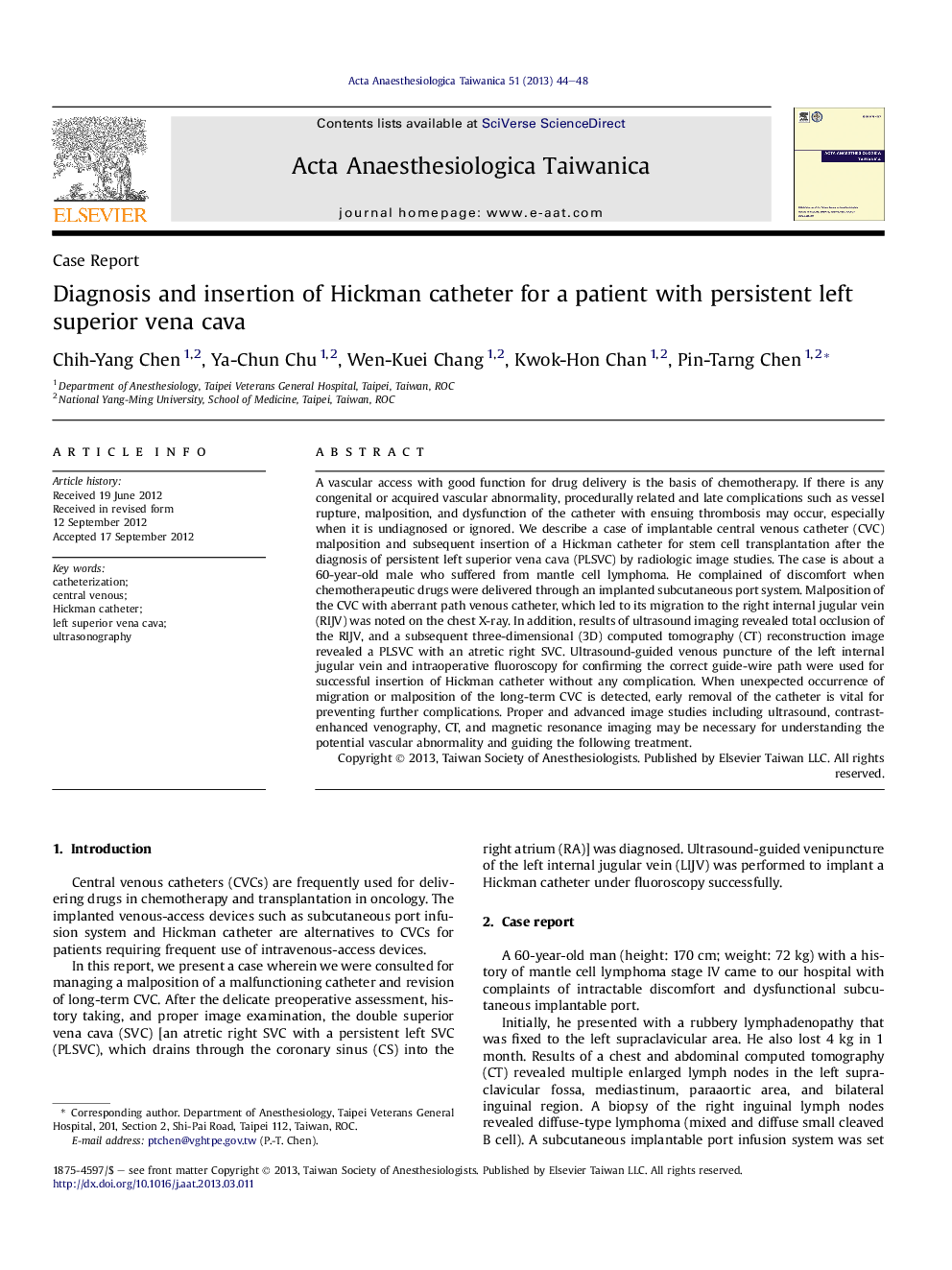| کد مقاله | کد نشریه | سال انتشار | مقاله انگلیسی | نسخه تمام متن |
|---|---|---|---|---|
| 2741493 | 1148534 | 2013 | 5 صفحه PDF | دانلود رایگان |

A vascular access with good function for drug delivery is the basis of chemotherapy. If there is any congenital or acquired vascular abnormality, procedurally related and late complications such as vessel rupture, malposition, and dysfunction of the catheter with ensuing thrombosis may occur, especially when it is undiagnosed or ignored. We describe a case of implantable central venous catheter (CVC) malposition and subsequent insertion of a Hickman catheter for stem cell transplantation after the diagnosis of persistent left superior vena cava (PLSVC) by radiologic image studies. The case is about a 60-year-old male who suffered from mantle cell lymphoma. He complained of discomfort when chemotherapeutic drugs were delivered through an implanted subcutaneous port system. Malposition of the CVC with aberrant path venous catheter, which led to its migration to the right internal jugular vein (RIJV) was noted on the chest X-ray. In addition, results of ultrasound imaging revealed total occlusion of the RIJV, and a subsequent three-dimensional (3D) computed tomography (CT) reconstruction image revealed a PLSVC with an atretic right SVC. Ultrasound-guided venous puncture of the left internal jugular vein and intraoperative fluoroscopy for confirming the correct guide-wire path were used for successful insertion of Hickman catheter without any complication. When unexpected occurrence of migration or malposition of the long-term CVC is detected, early removal of the catheter is vital for preventing further complications. Proper and advanced image studies including ultrasound, contrast-enhanced venography, CT, and magnetic resonance imaging may be necessary for understanding the potential vascular abnormality and guiding the following treatment.
Journal: Acta Anaesthesiologica Taiwanica - Volume 51, Issue 1, March 2013, Pages 44–48